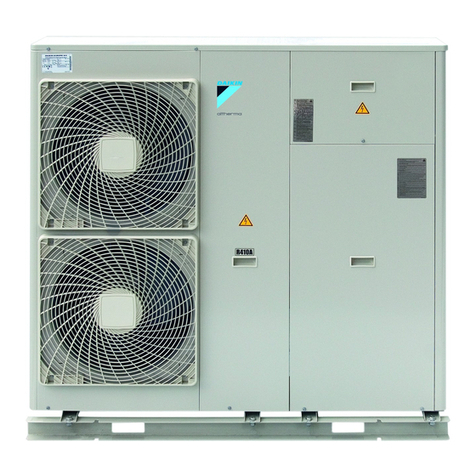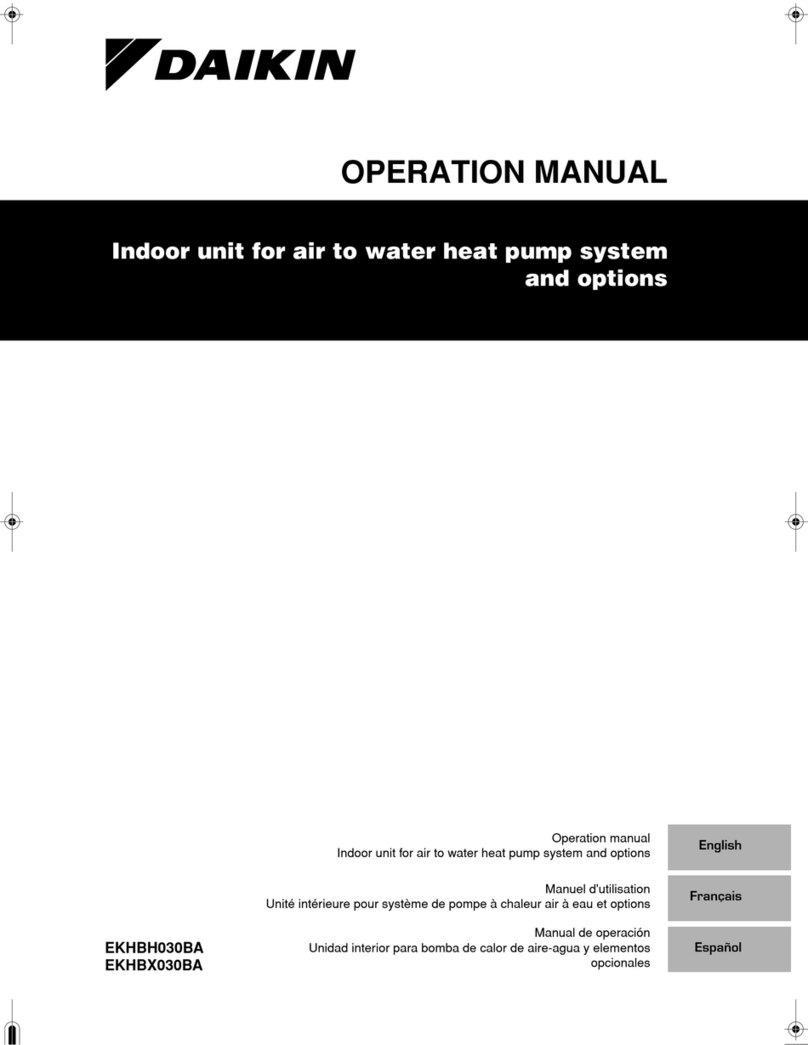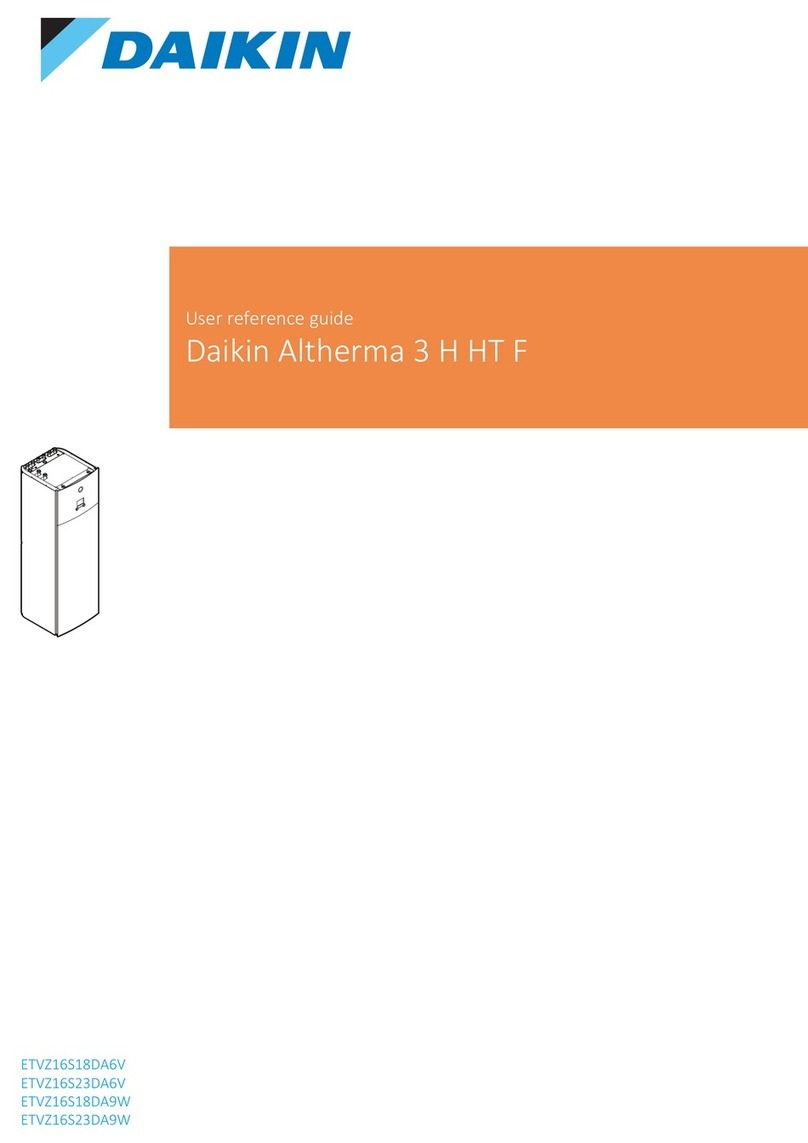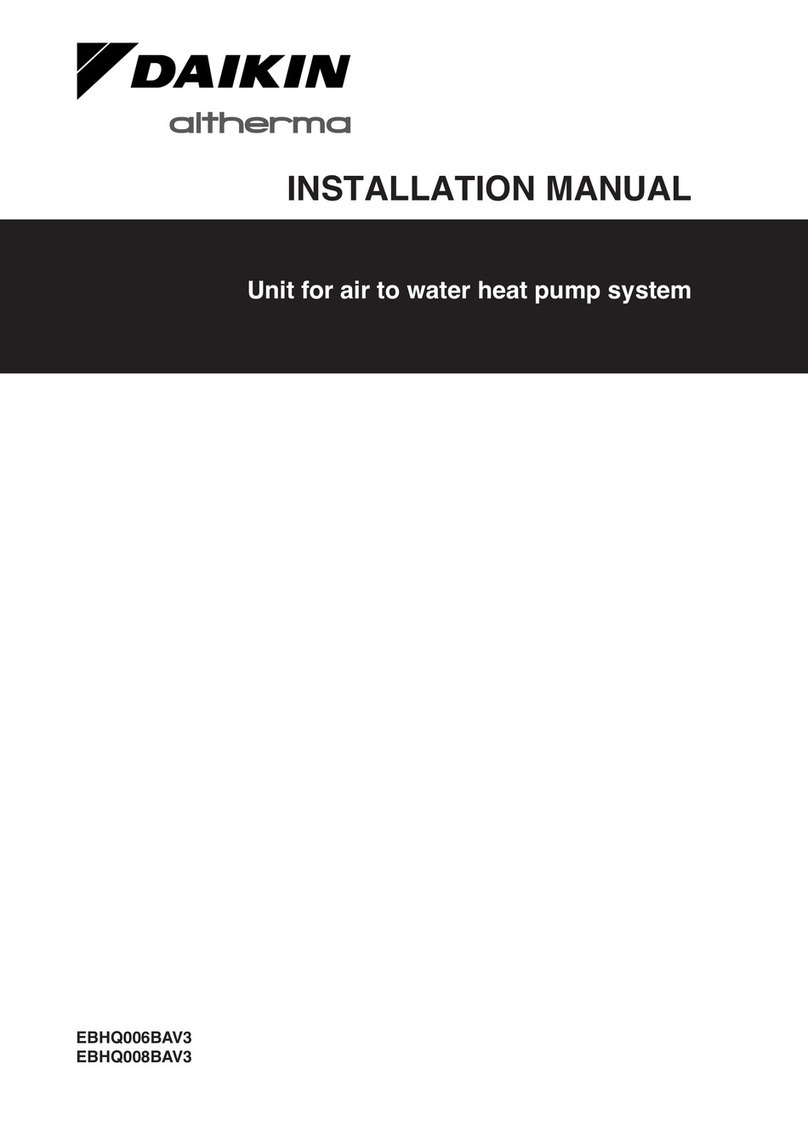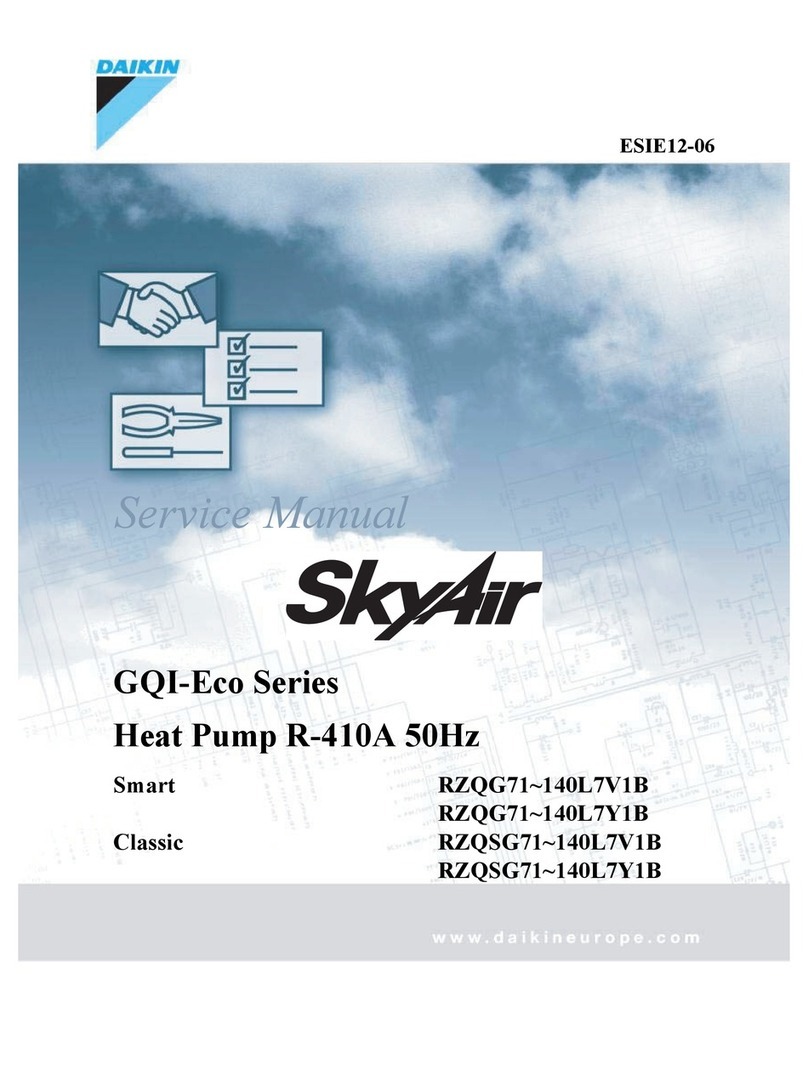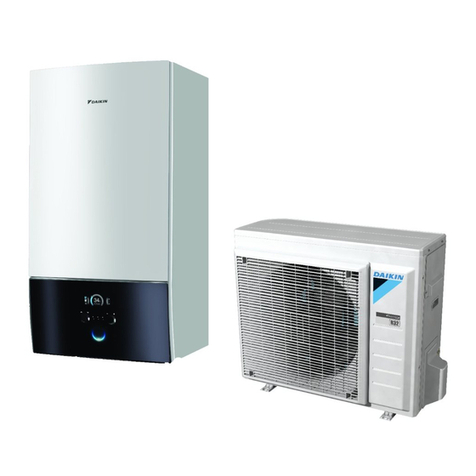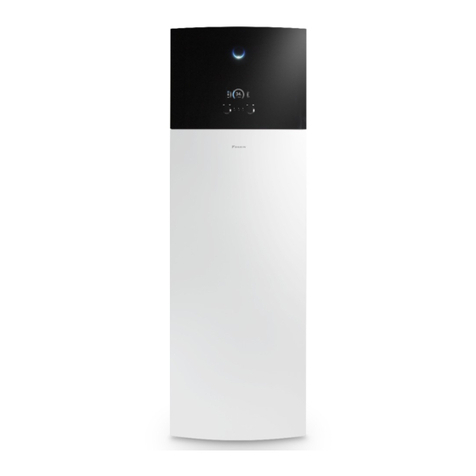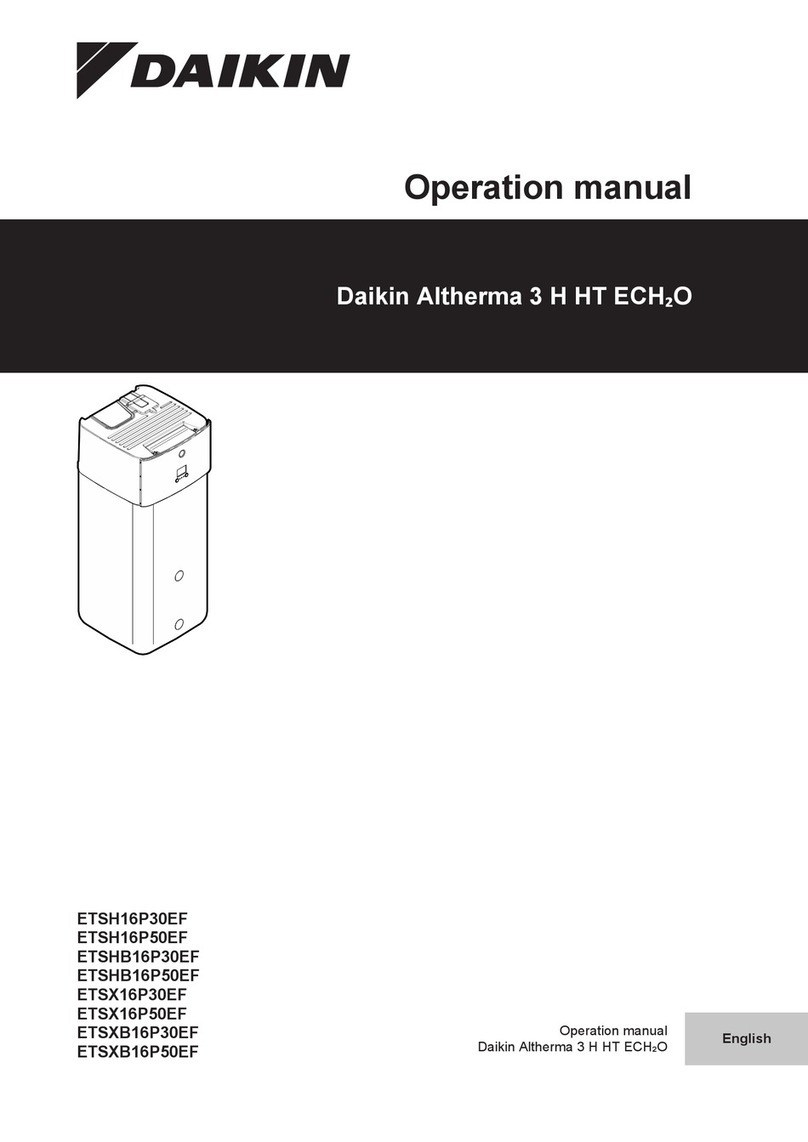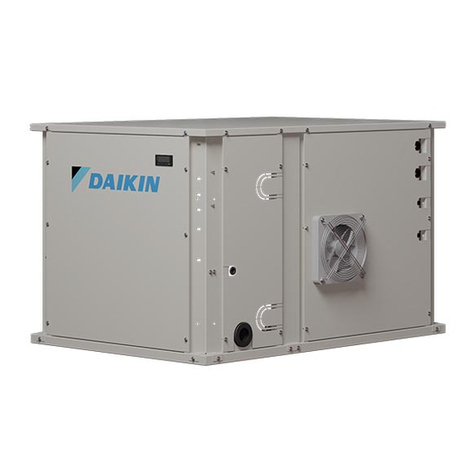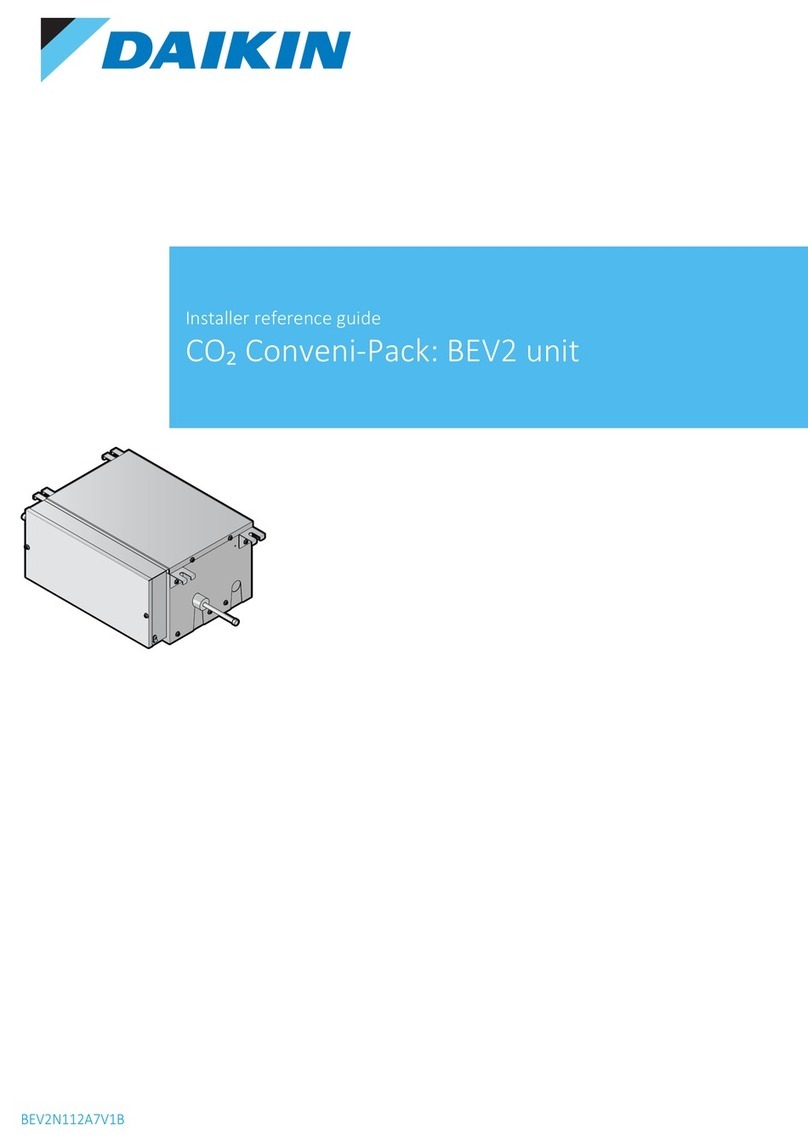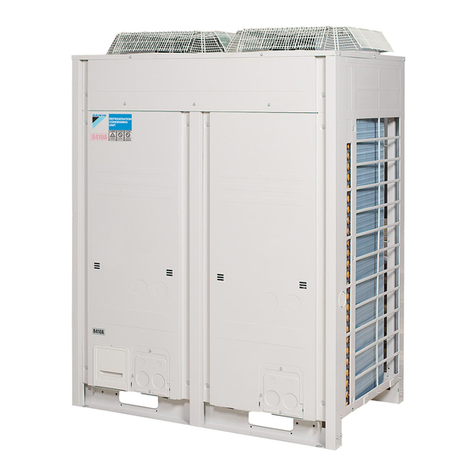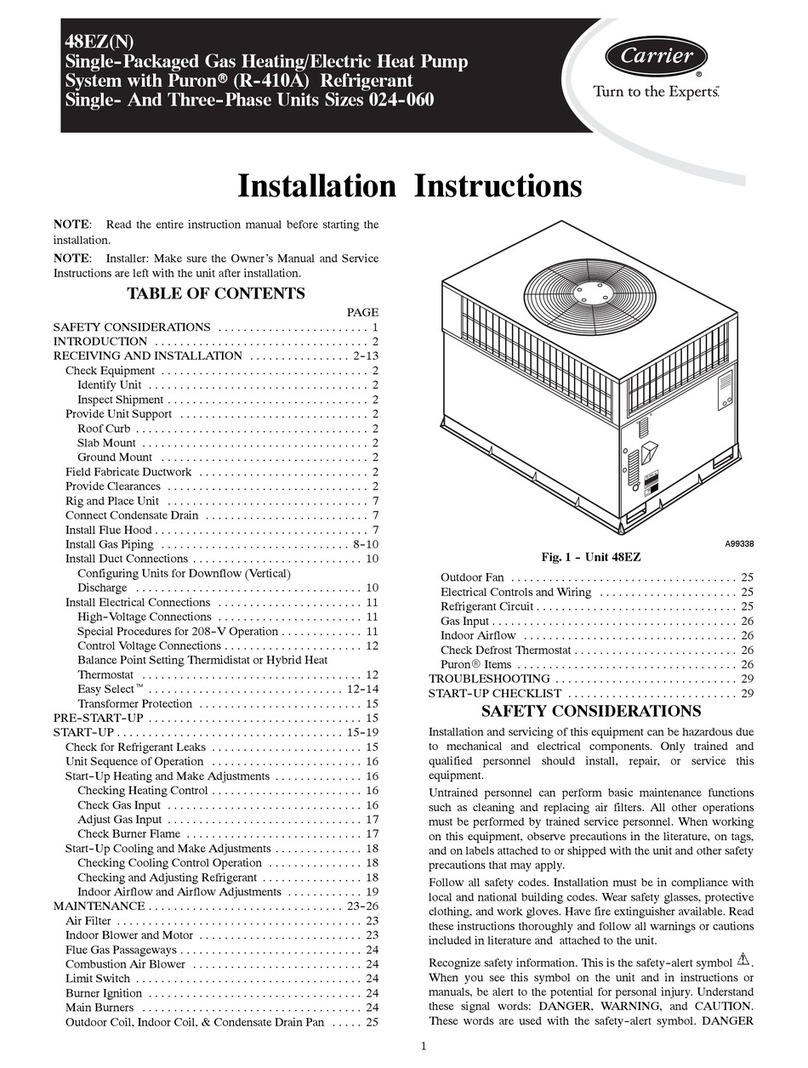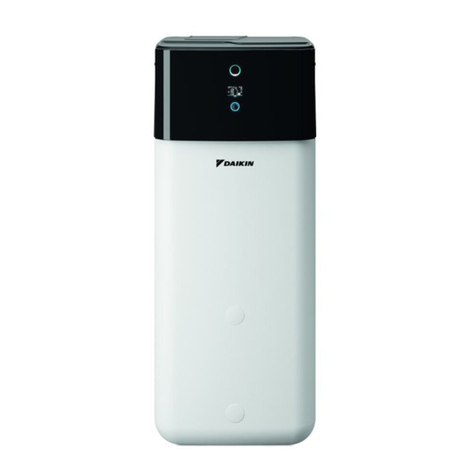
8
HIGH VOLTAGE!
Disconnect ALL power before servicing. Multiple
power sources may be present. Failure to do so may
cause property damage, personal injury or death.
4. Disconnect outdoor fan by removing the purple lead from
the Condenser Fan Defrost Relay.
5. Restart unit and allow frost to accumulate.
6. Afterafewminutesthedefrostthermostatshouldclose. To
verifythepositionofthe thermostatcheckfor 24Vbetween
“DFT”and“C”onthedefrostboard. Shouldthedefrostther-
mostat fail to close after a heavy build-up of frost and the
thermostatis lessthan 28°,thethermostatistobereplaced.
7. After the thermostat has closed, short across the test pins
with the a screwdriver blade until the reversing valve shifts.
This could take up to 22 seconds depending upon the posi-
tionofthetimingsettingonthedefrostboard. Immediately
upon the action of the reversing valve, remove the short.
Note: If this short is not removed immediately, the defrost
activity will last only 3 seconds.
8. After defrost has terminated (up to 10 minutes) check the
defrost thermostat for 24V between “DFT” and “C”. This
reading should be 0V (open sensor).
9. Shut off power to the unit.
HIGH VOLTAGE!
Disconnect ALL power before servicing. Multiple
power sources may be present. Failure to do so may
cause property damage, personal injury or death.
10. Replace outdoor fan motor wire removed in Step 4.
NOTE: Thecompressor“runtime’is accumulativeduringmultiple
heating cycles. The timer will reset to zero only when the defrost
sensor returns to an open condition. If the room thermostat is
operating in the “EM HT” mode, no accumulation of compressor
time is recorded.
TROUBLESHOOTING
Qualified Installer/Servicer only
When troubleshooting, the first step should always be to check
for clean coils, clean filter(s), and proper airflow. Indoor airflow
should be 375 to 425 CFM per ton of cooling based on the size of
the outdoor unit. The most common way of establishing indoor
airflow is heating temperature rise. Indoor airflow will then be
(Heatingoutputofequipment)/(1.1xtemp.rise).Inother cases,
measurement of external static pressure is helpful. For details,
see the Installation Instructions for your indoor unit.
TROUBLE SHOOTING ANALYSIS TABLE
COMPLAINT PROBABLE CAUSE REMEDY
1. High HeadPressure
1.Excessivechargeofrefrigerantinsystem.
2. Inadequate supply of air across the
condensercoil.
3. Non-condensate gases in the system.
1. Purge orpump-down excessive charge.
2. Make certainthat coil is not fouledin any
way, or that airisnot re-circulating.
3. Purgethesegasesfromthesystem.
Recharge system,ifnecessary.
2. LowHeadPressure 1.System low onrefrigerant.
2.Compressor valves broken. 1. Charge systemuntil sight glass is clear of bubbles.
2. Replace compressor.
3. LowSuctionPressure
1.Liquid line valve closed.
2.Restrictedliquid line.
3. The bulb of the thermal expansionvalve
haslostits charge.
4.System low onrefrigerant.
5.Dirty filters.
6.Coilfrosted up.
7. Flash gas in the liquid line.
8.Quantity ofairthroughevaporator notadequate.
1. Open the liquid line valve.
2. Replacefilter-dryer.
3. Detach the bulb from the suction line andhold
in one hand. If noliquid refrigerant goes through
thevalve, replacethe valve.
4. Test the unit forleaks. Addrefrigerantuntil sight
glass is free frombubbles, after repairingleak.
5. Cleanor replace filter.
6. Defrost and clean coil.Clean or replace filters.
7. Excessive liquidline drop.Checkliquidline size.
8. Increase theblower speed.
4. High SuctionPressure
1.Expansionvalve stuckopen.
2.Expansionvalve bulbnot incontact with
suction line.
3. Suction and/or discharge valve leaking or broken.
1. Correctvalveactionor replacethevalve.
2. Fastenbulb securelyto suctionline.
3. Replace compressor.
5. Compressor will not start.
1.Disconnect switchopen.
2.Blownfuseorfuseatdisconnect switch.
3.Thermostat set too high.
4. Selectorswitch in "Off" position.
5.Contactorand/orrelay coils burned out.
6.Loose or openelectrical connectionineither
the controlor powercircuit.
1. Closethedisconnectswitch.
2. Check thecauseof failureandreplacethefuse.
3. Adjust to lower temperature.
4. Turn selector switch knobto "Cool" position.
5. Replace contactor and/or relay.
6. Inspect andsecureall electrical connections.
